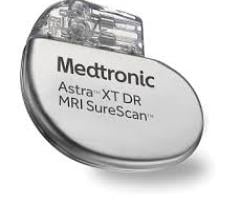News | December 10, 2013
Surgeon Astronaut Shares Experience of How Microgravity Effects the Body
December 10, 2013 — The human body begins to adapt to microgravity of low Earth orbit shortly after launch, according to surgeon astronaut Lee Morin, M.D., Ph.D., and astronaut mission specialist, NASA Johnson Space Center, Houston. Morin visited the International Space Station in 2002 as part of the STS-110 Atlantis space shuttle crew.
"Evolution has not prepared the human body for the space environment. However, the human body does successfully adapt to space,” said Morin at the 40th Annual VEITHsymposium. “These changes begin immediately upon exposure to microgravity, although understanding is confounded by the stresses during launch from the Earth's surface into low Earth orbit. The engineering and physics constraints of rocket science bracket the launch duration to furious eight or nine minutes. Immediately post-insertion, adaptation begins.”
Morin shared his experience in space, along with the effects of microgravity on the body's systems. According to Morin, fluid shifts immediately from the lower extremities to the upper part of the body and superficial veins in the neck become engorged. Within the first 15 minutes, up to two-thirds of astronauts suffer from motion sickness that can last up to seven days.
The cardiovascular system experiences a number of changes, including increased cardiac output; a 10 to 15 percent plasma volume loss begins immediately along with a 10 percent reduction in erythrocyte mass.
"Fortunately, cardiovascular changes of space do not threaten survival,” said Morin. “There is no increase of arrhythmias in space.”
Changes to the musculoskeletal system develop with medium to long-term microgravity exposures. Skeletal muscle atrophies and strength is lost. Bone mineral density is also affected with a loss rate of about 1.5 percent per month from the weight bearing bones.
"Over the past decade we have learned to control these losses with heavy resistive exercise on a daily basis," said Morin.
Radiation exposure is the most significant health threat in microgravity. Spacecraft can only be partially shielded from radiation.
"Crew can sense radiation, they often report light flashes within their eyes, usually when eyes are closed pre-sleep," said Morin.
The primary radiation risk to the crew is increased lifetime cancer mortality.
For more information: www.veithpress.org, www.veithsymposium.org
© Copyright Wainscot Media. All Rights Reserved.
Subscribe Now

 August 14, 2024
August 14, 2024 








